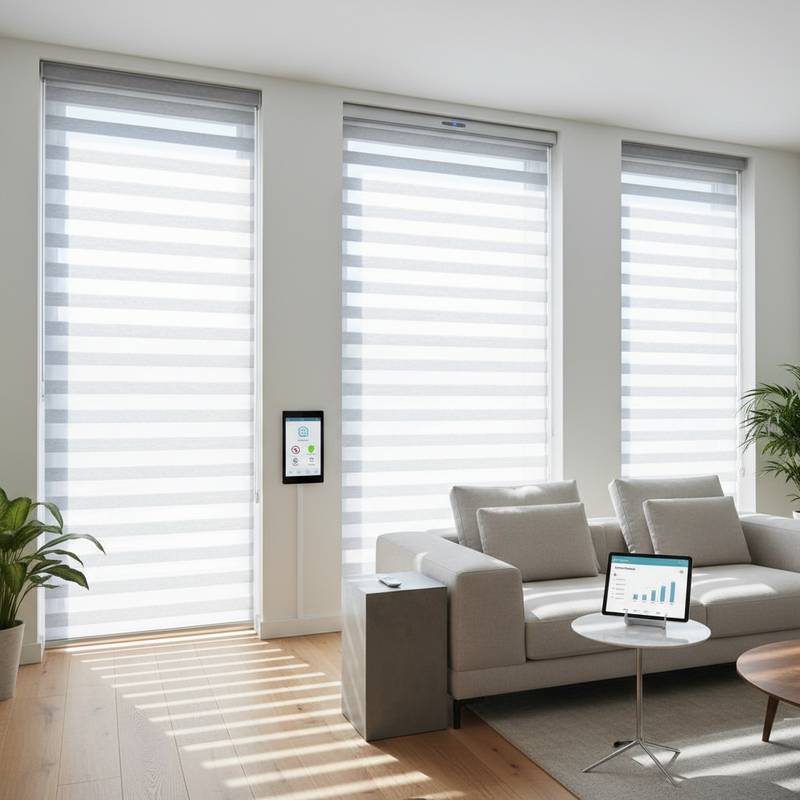Why Smart Blinds Are Now More Affordable Than Manual Shades
Smart blinds once appeared as a high-end feature for advanced residences. Today, they represent a practical and economical upgrade for many homeowners. Although manual shades may seem inexpensive initially, they often incur substantial ongoing expenses related to upkeep, materials, and operation. In contrast, smart blinds demonstrate that automated solutions can yield greater financial benefits over time.
Hidden Expenses of Manual Shades
Manual shades might attract buyers with their low initial price point. However, consider the accumulating costs: cords degrade with use, internal mechanisms fail after several years, and frequent replacements become necessary. Homeowners frequently hire professionals for installation to ensure precise fitting, particularly in challenging spaces, which elevates the total investment.
Selections in fabric and hardware can significantly raise expenses, especially for expansive windows or bespoke configurations. What begins as a straightforward purchase often evolves into a cycle of repairs and renewals that diminish its apparent value.
Advances in Production and Design Efficiency
Manufacturers of smart blinds employ streamlined production techniques that reduce overall costs. Modular motor units and rechargeable elements simplify assembly and minimize material waste. These blinds often accommodate standard window dimensions, eliminating the expense of custom manufacturing.
Growing market demand has intensified competition, which in turn lowers retail prices. Basic smart models now align in cost with moderate manual options, yet they incorporate built-in automation that previously demanded costly add-ons. For instance, a standard set of smart roller blinds might retail for under $100 per window, including remote control capabilities.
Energy Efficiency Gains from Smart Automation
A primary financial benefit of smart blinds lies in their contribution to energy conservation. These systems adjust positions based on sunlight intensity and indoor temperatures, thereby optimizing natural light and reducing reliance on artificial heating or cooling. When linked to broader home automation networks, they open to capture morning sunlight for passive warming or close to block afternoon heat, maintaining consistent comfort levels.
User reports indicate average reductions in energy bills of 10 to 20 percent during the initial year. The automated functionality removes the burden of manual adjustments, ensuring consistent performance. These efficiencies accumulate, often recouping the purchase price faster than with non-automated coverings that offer no such adaptive control.
Simplified Setup and Upkeep Processes
Installing traditional window treatments frequently necessitates expert assistance, particularly in homes with elevated ceilings or irregular window arrangements. Smart blinds prioritize user-friendliness; most operate wirelessly with battery-driven motors that secure in place using basic tools like brackets and screws.
Upkeep proves equally manageable. Rather than overhauling frayed cords or rusted parts, users simply recharge batteries or swap out compact modules, a process that takes minutes. This approach not only curbs expenses but also prolongs product durability, often extending service life beyond a decade with proper care.
Enhanced Benefits from Integrated Automation
Beyond cost reductions, smart blinds elevate everyday living through seamless control and added functionality. Mobile applications or voice-activated assistants allow precise management of light levels, privacy settings, and room atmospheres from anywhere.
Compatibility with devices such as thermostats and smart lights creates synergistic effects. For example, blinds can synchronize to dim during evening routines or rise with sunrise alarms, fostering a responsive environment. Such integrations promote sustained energy optimization while delivering tangible improvements in convenience and well-being.
Selecting Window Treatments for Lasting Value
Opting for smart blinds extends beyond mere technological adoption; it involves committing to a framework that minimizes resource consumption, conserves energy, and streamlines household tasks. While upfront costs parallel those of manual alternatives, the cumulative advantages in reduced maintenance and operational savings establish clear superiority.
As intelligent home features transition into essential components, window solutions play a pivotal role in this evolution. Embracing smart blinds equips residences with sustainable enhancements that balance affordability with advanced performance.
